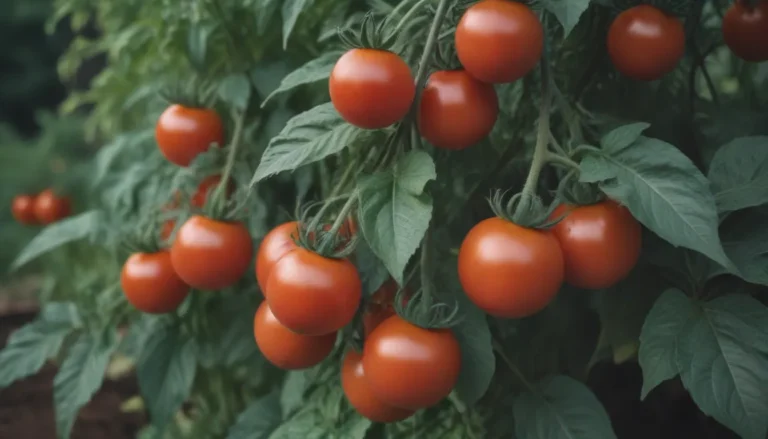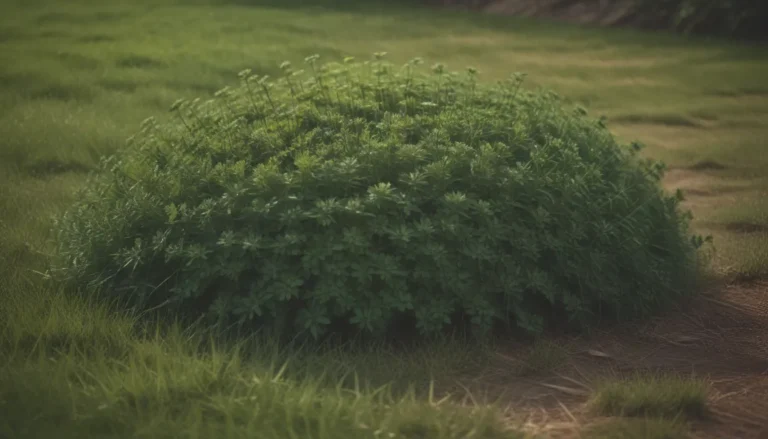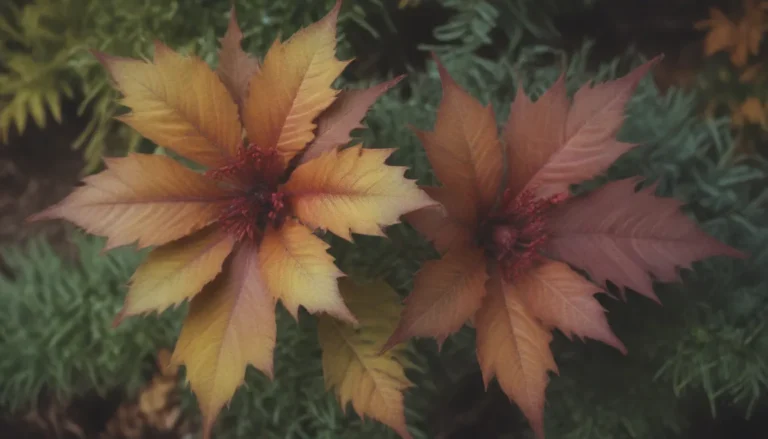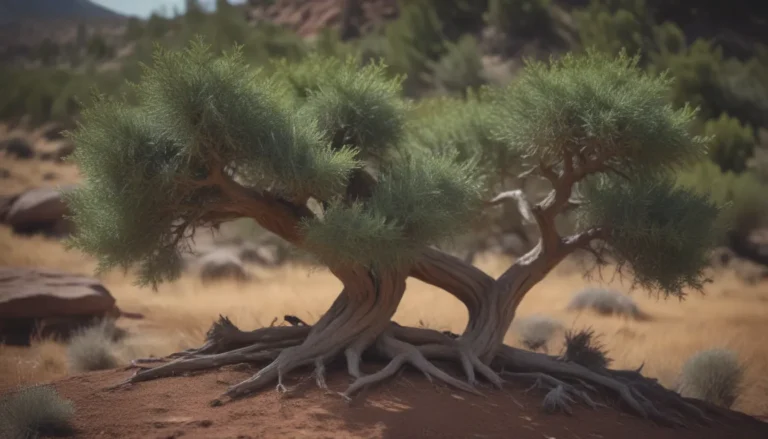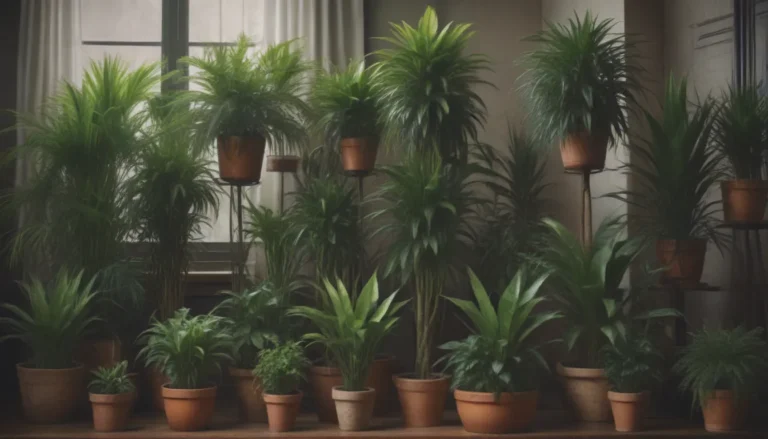Planning the Perfect Garden: 23 Layout Ideas for Vegetables, Herbs, and More
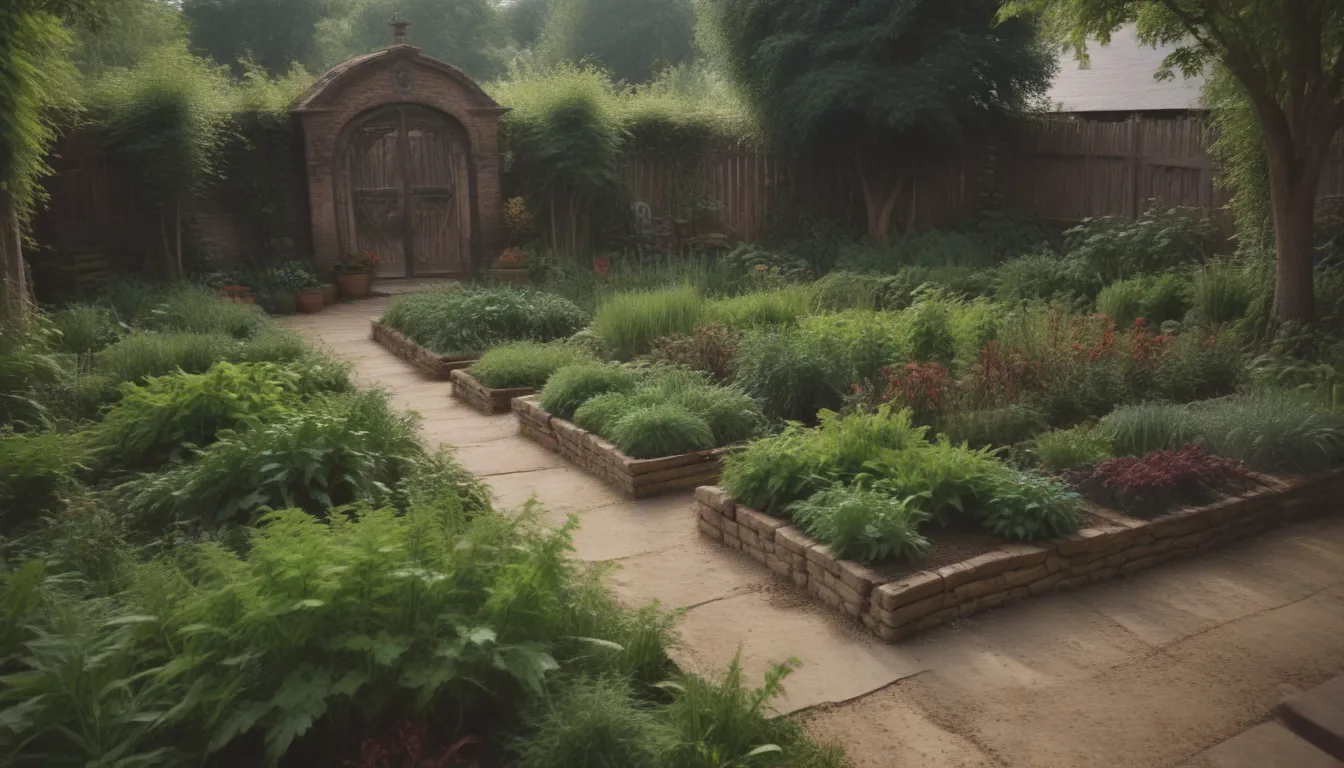
Are you looking to start a small backyard garden, grow your own fruits and vegetables, or create a stunning herb garden? No matter the size or type of garden you’re planning, having a solid layout in mind can make all the difference. From square-foot gardens to raised beds to container gardens, there are endless possibilities when it comes to designing your outdoor space. In this article, we’ll explore 23 garden layout ideas that will inspire and guide you as you plan your perfect garden oasis.
Why Garden Layout Matters
Before we dive into the various garden layout ideas, it’s essential to understand why the layout of your garden is crucial. A well-thought-out layout can help maximize space, ensure proper sunlight exposure for your plants, and create a visually appealing and functional outdoor space. By carefully considering factors like the type of plants you want to grow, the location of your garden, and the amount of sunlight it receives, you can create a garden that thrives and brings you joy throughout the year.
Square Foot Vegetable Garden
A square-foot vegetable garden is a fantastic way to organize your plants and make the most of limited space. Instead of traditional rows, you plant in square-foot blocks, with each block accommodating the maximum number of plants based on their spacing requirements. This method allows you to grow a variety of vegetables, fruits, and herbs while maximizing your garden’s productivity.
Key features of a square foot vegetable garden:
– Efficient use of space
– Easy to maintain and harvest
– Ideal for small backyard gardens or urban settings
Garden With a Cohesive Color Palette
Creating a garden with a cohesive color palette can make your outdoor space appear larger and more visually appealing. By using a limited number of colors that complement each other, you can create a harmonious and balanced look. Consider planting low, loose plants to soften the geometric shapes of hardscaping elements like patios, lawns, and pathways.
Tips for a garden with a cohesive color palette:
– Choose complementary colors that work well together
– Keep plantings low and loose for a soft, inviting look
– Use a limited color palette to create a unified space
Raised Garden Beds
Raised garden beds offer a neat and organized way to plant your vegetables, flowers, or herbs. They provide better soil control, reduce the need for regular weeding, and allow you to grow a variety of plants that may not thrive in the same soil. Whether you opt for symmetrical raised beds for a formal look or a more structured design with gravel paths, raised beds can elevate the aesthetic and productivity of your garden.
Benefits of raised garden beds:
– Better soil control and drainage
– Reduced weed growth
– Ideal for growing a variety of plants in a limited space
Perennial Shade Garden
Shade gardens create a peaceful and restful ambiance, perfect for relaxing around patios or decks. By incorporating low-maintenance plants like ferns and hostas, you can create a lush and inviting space that thrives in shady conditions. Consider adding variegated plants to add texture and visual interest to your shade garden.
Elements of a perennial shade garden:
– Low-maintenance plants like ferns and hostas
– Variegated foliage for added texture
– Contrast with darker wood tones for a striking look
Inviting Modern Garden
A modern garden with clean lines and symmetry can create a soothing and inviting outdoor space. By using minimal colors and incorporating rounded shapes like clipped boxwood, you can achieve a relaxed and orderly look with minimal maintenance. Consider repeating shapes and incorporating greenery to create a fresh and contemporary garden design.
Tips for an inviting modern garden:
– Create clean lines and symmetry
– Use minimal colors for a calming effect
– Incorporate rounded shapes for a relaxed look
Side Yard Garden
Narrow side yards can be challenging to design, but with the right layout, you can transform them into inviting outdoor spaces. By using fencing that matches the materials of your house, you can create the walls of a garden room that guides the flow of the space. Add tall plants like arborvitae to create visual interest and low, spreading grasses to make the space feel wider.
Design tips for a side yard garden:
– Use fencing to create the walls of a garden room
– Incorporate tall and low plants for visual interest
– Opt for low, spreading grasses to widen the space
Lush Drought-Tolerant Garden
Limited water doesn’t mean you can’t have a vibrant and lush garden. By choosing drought-tolerant plants like rose of Sharon, rosemary, and Russian sage, you can create a beautiful and sustainable outdoor space that thrives in dry conditions. Consider using light-colored stone mulch to enhance the vibrancy of your plants and create a cohesive look.
Features of a lush drought-tolerant garden:
– Use drought-tolerant plants for sustainability
– Incorporate light-colored stone mulch for visual appeal
– Create a vibrant and low-maintenance garden space
Flower Border Garden
A classic flower border garden with a progression of plant heights can create a stunning and dynamic outdoor space. By incorporating spiky plants and complementary colors like white and yellow, you can create a focal point that draws the eye toward the house. Consider planting blue-toned flowers to make them stand out against the backdrop of greenery.
Elements of a flower border garden:
– Progression of plant heights for visual interest
– Use of spiky plants for texture
– Incorporate complementary colors for a cohesive look
Japanese-Influenced Garden
A Japanese-inspired garden with meticulously maintained shrubs and natural ground coverings can create a sense of tranquility and harmony in your outdoor space. By using moss, gravel, and carefully selected flowering plants, you can achieve a Japandi style that is both elegant and inviting. Consider echoing the color of hardscaping elements to create a cohesive and balanced garden design.
Tips for a Japanese-influenced garden:
– Meticulously maintained shrubs and ground coverings
– Use of natural materials like moss and gravel
– Echo hardscaping colors for a unified look
Monochromatic Garden
A monochromatic garden with shades of a single color can create a dramatic and captivating outdoor space. By using subtle differences in shades and incorporating round and spiky flowers, you can create depth and visual interest in your garden. Consider adding contrasting elements like white flowers to brighten up the space and create a focal point.
Key features of a monochromatic garden:
– Use shades of a single color for a dramatic effect
– Incorporate round and spiky flowers for texture
– Add contrasting elements for visual interest
Entryway Garden
A welcoming entryway garden with a wide path and creeping plants between flagstones can create a charming and inviting entrance to your home. By coordinating plant colors with ornamental grasses, succulents, and containers, you can tie the entire entrance together and create a cohesive and welcoming outdoor space. Consider keeping larger shrubs away from walls for a more open and spacious feel.
Elements of an entryway garden:
– Wide path with creeping plants for a charming entrance
– Coordinated plant colors for a cohesive look
– Use of ornamental grasses and succulents for texture
Ornamental Grass Garden
Ornamental grasses are low-maintenance plants that add movement and visual interest to any garden. By incorporating grasses and small trees in your outdoor space, you can create a dynamic and inviting garden design. Consider using an arbor to frame a distant view and create a unique focal point in your garden.
Benefits of an ornamental grass garden:
– Adds movement and sound to the garden
– Glows when backlit by the sun
– Creates a dynamic and visually appealing outdoor space
Enclosed Garden
Using lattice to enclose a garden space can create a sense of privacy and enclosure without feeling claustrophobic. By planting on either side of lattice walls and elevating plants above the sitting area, you can create an airy and inviting outdoor space. Consider blending wood tones with gray hardscaping elements for a cohesive and harmonious design.
Tips for an enclosed garden:
– Use lattice for privacy and enclosure
– Elevate plants above the sitting area for a sense of depth
– Blend wood tones with hardscaping elements for a unified look
Modern, Functional Garden
Creating a modern and functional garden that seamlessly integrates with your outdoor entertainment area can enhance the overall look and feel of your home. By carving out garden spaces on existing patios or incorporating raised beds, you can create a stylish and inviting outdoor space. Consider using large boulders and plantings to soften the look of stone pavers and create a natural and welcoming garden design.
Features of a modern, functional garden:
– Integrates seamlessly with outdoor entertainment areas
– Incorporates raised beds and large boulders for visual interest
– Creates a stylish and inviting outdoor space
Zen Garden
A Zen garden with symmetry and geometry can create a serene and harmonious outdoor space. By juxtaposing hardscaping elements with lush border plantings, you can achieve a balance of order and natural beauty. Consider incorporating mounding shapes and fullness in your plantings to create a tranquil and inviting garden design.
Elements of a Zen garden:
– Symmetry and geometry for a balanced look
– Softening hardscaping with lush border plantings
– Incorporating mounding shapes for a serene and harmonious design
Floating Island Gardens
Island beds overflowing with flowers can create a natural and cohesive garden design. By using clean edges and repeating colors and plants, you can achieve a sense of cohesion and unity in your outdoor space. Consider incorporating tall evergreens to break up the expanse of flowering perennials and create visual interest in your garden.
Tips for floating island gardens:
– Use clean edges and repeating colors for a cohesive look
– Incorporate different size beds for a natural feel
– Break up expanse with tall evergreens for visual interest
Front Yard Garden
A well-maintained front yard garden can make a lasting impression and enhance the curb appeal of your home. By incorporating large shrubs, bright flowers, and hardscaping elements that complement your house’s style, you can create a welcoming and inviting outdoor space. Consider planting grasses and seasonal flowers to add texture and color to your front yard garden.
Elements of a front yard garden:
– Large shrubs and bright flowers for impact
– Hardscaping elements that complement your house’s style
– Grasses and seasonal flowers for texture and color
Small Vegetable Garden
Even with limited space, you can create a productive and beautiful vegetable garden. By maximizing your space and planting based on growing seasons, you can ensure a continuous harvest of fresh produce. Consider focusing on the vegetables you love to eat and planting them in a way that maximizes space and sunlight exposure.
Tips for a small vegetable garden:
– Maximize space by planting based on growing seasons
– Focus on vegetables you love to eat
– Use vertical gardening techniques to make the most of limited space
Large Backyard Garden
If you have a large backyard, you have the freedom to create two distinct garden spaces that complement each other. Consider a lush green lawn for outdoor activities and a border garden with trees, flowers, and water features for added visual interest. By letting the shape of each space flow organically, you can create a dynamic and inviting outdoor oasis.
Features of a large backyard garden:
– Two distinct garden spaces for different activities
– Room for creativity, color, and texture
– Organic flow of shapes to create a dynamic outdoor space
Vertical Garden
For those with limited square footage, a vertical garden can provide a flexible and creative solution. Consider planting succulents, herbs, or flowers in a vertical arrangement to maximize space and create a visually striking design. Whether you opt for a scattered effect or a minimalist row layout, a vertical garden can add beauty and functionality to any outdoor space.
Benefits of a vertical garden:
– Maximizes space in small outdoor areas
– Provides a creative and visually striking design solution
– Allows for a variety of plantings in a limited footprint
Herb Garden in Terracotta Pots
Herbs thrive in containers, making them an ideal choice for a terracotta pot garden. By stacking pots to maximize light exposure for different herbs, you can create a compact and efficient herb garden. Consider planting herbs with similar water requirements in the same pot and arranging them to create a visually appealing and functional outdoor space.
Tips for a herb garden in terracotta pots:
– Stack pots to maximize light exposure for herbs
– Plant herbs with similar water requirements together
– Create a compact and efficient herb garden in a small space
Formal Rose Garden
A formal rose garden is a timeless and elegant garden layout that can elevate any outdoor space. By planting hedges in a straight shape and filling the area with overflowing rose bushes, you can create a classic and refined garden design. Consider incorporating pebble gravel paths and hedge borders to enhance the formal look of your rose garden.
Features of a formal rose garden:
– Timeless and elegant garden layout
– Straight hedges and overflowing rose bushes for a classic look
– Pebble gravel paths and hedge borders for a formal design
Mixed Herb, Vegetable, and Flower Garden
Herbs, vegetables, and flowers can coexist beautifully in a garden with rows, creating a dynamic and functional outdoor space. Consider planting flowers on the border to attract pollinators and repel pests, while interspersing herbs and vegetables throughout the garden beds. By planning your garden layout based on factors like location, sun exposure, and plant compatibility, you can create a thriving and diverse outdoor space.
Tips for a mixed herb, vegetable, and flower garden:
– Plant flowers on the border to attract pollinators
– Intermix herbs and vegetables for a functional and visually appealing design
– Consider plant compatibility and sun exposure when planning your garden layout
Conclusion
Designing the perfect garden layout is a creative and rewarding process that can enhance the beauty and functionality of your outdoor space. Whether you opt for a square-foot vegetable garden, a raised bed garden, or a Zen-inspired garden, the key is to consider factors like plant compatibility, sun exposure, and space efficiency. By incorporating elements like clean lines, symmetry, and color palettes that work well together, you can create a garden that not only thrives but also brings you joy and relaxation year-round.
No matter the size or type of garden you’re planning, there are endless possibilities for creating a beautiful and inviting outdoor oasis. With the 23 garden layout ideas mentioned in this article as inspiration, you can design a garden that reflects your personal style, enhances the beauty of your home, and provides a space for relaxation and enjoyment. So grab your gardening tools, roll up your sleeves, and get ready to transform your outdoor space into a lush and vibrant garden that you’ll love for years to come!
